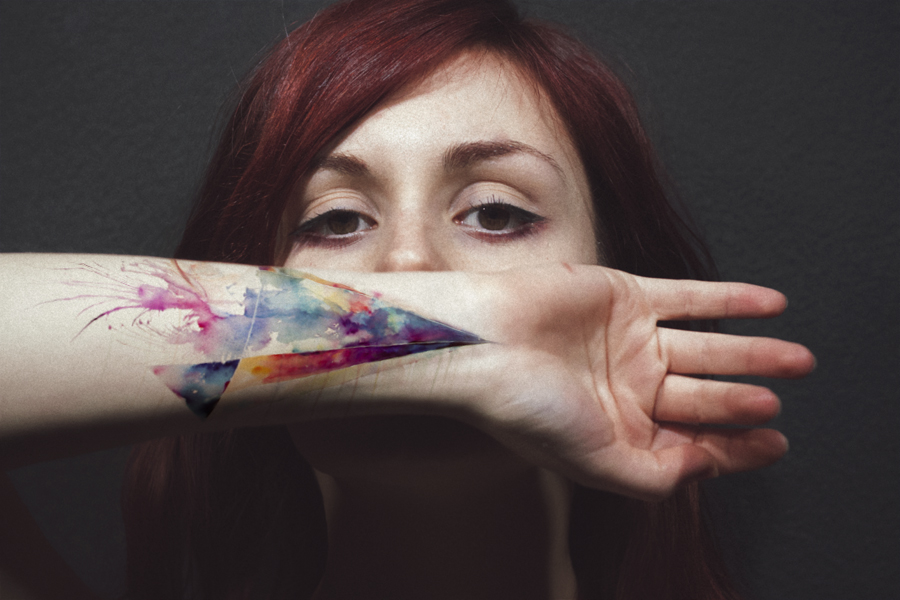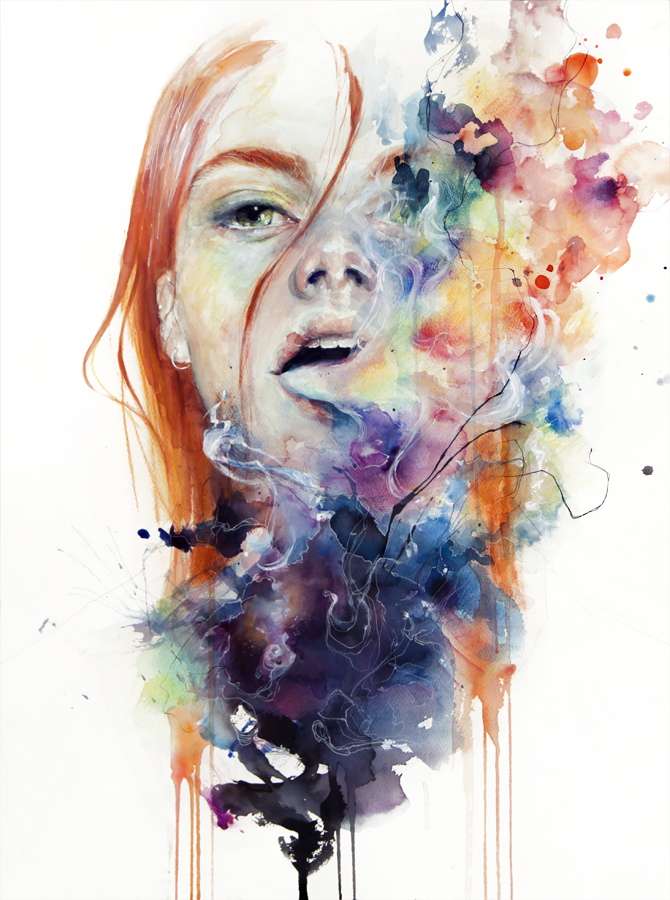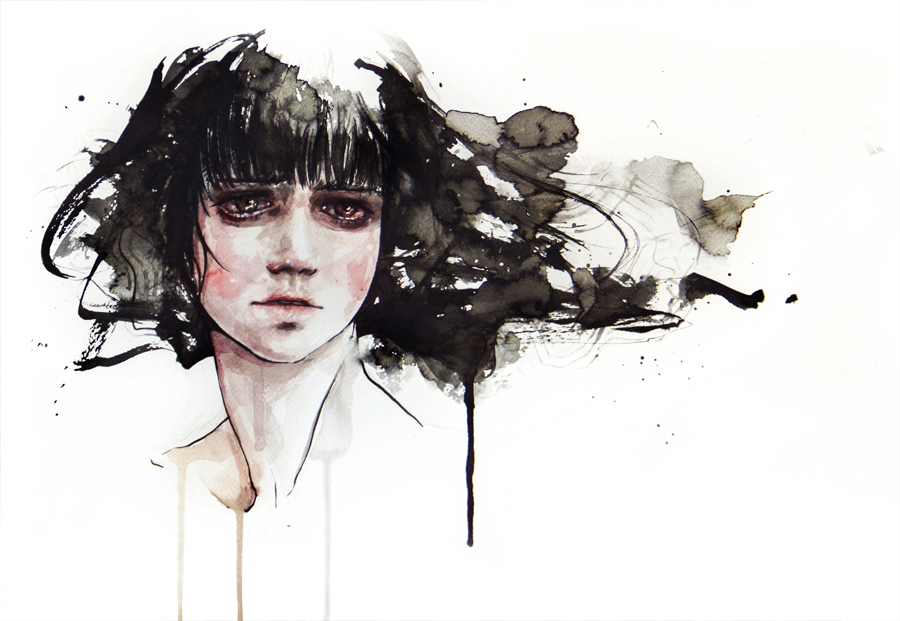Fabian Marcaccio
Fabian Marcaccio is an argentine born artist living and working in New York. His works including 'Paintants' and 'Draftants' have been exhibited worldwide. Marcaccio attended the University of Philosophy in Argentina. At the age of 22 in 1985, he moved to New York City where he continues to live and work. His collaborative projects include projects with architect greg Lynn in 2001 and projects with composer Claudio Baroni creating animated operas and a paintball performance in Toronto. His work primarily investigates whether the traditional medium of paint can survive in the digital age. He is well known for his manipulation of the conventions of painting, although n recent years, he has relied on digital and industrial techniques with his work. The result of this are which created his 'Paintants' work which combines digitally manipulated imagery, sculptural form and painted surfaces.

Fabians work deconstructs modernist painting techniques to, in the artists own words, ''make abstraction extroverted.'' The artist concludes that modernism has devolved into ''a geography of cliches and corruption.'' His work is to apply current theories about technology and society and to explore more complex ideas about art. He incorporated images of nature, crowds, communist icons, and religious symbols into painting as well as politics and science. Marcaccios canvases are constructed with photographically enlarged canvas weaves and liquidity of brush strokes and paint. He looks at the relationship between brush and canvas and how they can encounter each other in a hundred different relationships such as how a single brush stroke may leak into a row of drips or how another line may be bisected and reconnect elsewhere. His work frequently appears to be scanned, manipulated and enlarged digitally and printed onto a surface. He uses clear silicone gel to hold the texture of a brushstroke to add layers of structural texture.
His work 'Paintants.' a mixture of 'paint' and 'mutant,' describe how he wishes to, in his own words, ''multiply the viewers relationship with the piece.'' His works seem to grow from the wall into the viewers space. A majority of his work in the 1990's included the use of taut, pulled canvasses, stretcher bars, contorted frames and even the use of bungee cords to pull the piece back to the wall. His works tend to escape the boundaries of the wall and extend into open space, spiralling out of the canvas. In one occasion, the work escaped the gallery space to extend outside.
He describes the way he works as 'rendering' rather than 'making' as this relates to how an image or three-dimensional piece is rendered in animation, as his work is predominantly sculptural. He also refers to some of his works as 'action paintings.'
Fabian says 'the painting is on one hand, a form of resistance that can still achieve important outcomes and innovative, organic production and bringing new models that involve the heart, brain and courage.'
'The Predator' was his tour-de-force collaboration with architect Greg Lynn. The piece was covered with imagery inside and out and the form allowed visitors to enter the tube-like structure. http://www.youtube.com/watch?v=Ir6LtuqsP-M
The piece is made up of transparent panels of various dimensions and act as a canvas for digital painting on plastic foil. Each panel is connected with cable ties to 35 metal rings. The diameter of the tube varies at different segments and the luminosity changes in each panel from painted section to colourful foil.
It is painted with coloured silicone inside and out of the panels. The structure was initially supposed to support itself but later on, aluminium pipes had to be added.
The piece was supposedly inspired by the Arnold Schwarzenegger film 'the predator' due to its elaborate special effects. It also reflects the experimental architecture created in the 60's and 70's.
From the outside, the piece appears to be a skeletal form of a creature or resembles a ribcage, yet he interior appears to resemble a rolling wave.
In a review from the Los Angeles times in 2001, the piece was compared to Frankensteins monster in which the way the hybrid sections are mis-matched and don't quite mesh together. I find this comment rather intriguing as this makes the piece more animalistic.
The work doesn't feel like a single or organic whole but a large structure with several different components that become a collective piece.
During the time when the piece was created and exhibited, both artists, Marcaccio and Lynn were residents at the Wexner Center for the arts at Ohio State University. Both artists explore form, surface and process.
With Fabians work, he feels that the interpretation should be left to the viewer, to give them a feeling of intimacy with the piece and come up with their own conclusions. He likes to believe that his work has a fine line between reality and facts, things which are directly affecting us in current society and the type of fiction from a video game or movie. A few of his sculptural works such as ''Loveless'' consisting of the pieces 'This just out Paintant' and 'This just in Paintant.' both created in 2009 during a time of conflict in eastern countries. The sculptures are manipulated into expressive shapes which branch off into an imminent explosion. These pieces are created by plastic deformation, aluminium and coloured silicone. Fabian pursues the idea that painting should always be renewed which prompts him to relate with new forms of expression. The artists states that ''painting is constantly seeking to define itself and to define themselves in relation to other languages in a state of complexity, both inside and outside, in a state of constant change.''
For Fabians paintings in the 'rope paintings' series created between 2008 and 2009, such as 'throwing up girl,' the work is created on exposed woven rope to create texture and create the sense that the piece is beyond two-dimensional. The volume of the pieces create transparency which allows the viewer to view the supports and shadows cast on the wall behind the piece itself which adds to the work and the way is is perceived in its totality. [video] While documenting and digitally recording his work including the rope paintings, Fabian chooses to zoom in and out on different parts of his pieces, looking at different perspectives and angles. He relates this to phenomenology in which the way looking at more or less detail can inspire multiple different views with peripheral vision and central vision view different parts of the work. http://vimeo.com/66157441
Fabians influences include his nationality and the transition between moving from Argentina and New York. He states in an interview for BOMB magazine that he felt foreign in his home country, but also felt foreign in New York. This relates to his painting subjects which is the transcultural. He disregards European contexts in painting such as formalism and modernism and focuses on painting as in his words, 'dynamic archaeology,' He views his work as 'painting in spite of itself' rather than 'painting itself,' which is what formalists saw. By this he elaborates to say that the painting is going against its own principles. He engages all generic elements of painting including brush strokes, lines and ground to create mutual betrayals.
Fabian briefly mentions the photographer Jeff Wall as an inspiration as his 'compresses video into a photograph' as the image is a small timeline condensed into a single piece or image.
In relation to my own work and practice, I chose to study the work of Fabian Marcaccio as his use of colour, material and the concept of expanding into open space. I admire the way he disregards the typical rules and genre's or painting and focuses on the media itself. I also admire the way that his work doesn't particularly display a certain theme or concept but the interpretation is left up to the viewer to find their own meaning.
EVALUATION
After exploring the thought process and concept of Fabian Marcaccios work, i feel that overall the presentation covered a lot of information about the work itself, styles used and information about the artist in relation to his work
However, to improve on this presentation, i should have probably linked the artists work with other painters and sculptors in modern art as well as relate his work to other art movements.
Although Fabian Marcaccio doesn't like to define his style of work using an existing art movement or particular label of style, you can see elements which relate to previous artists works.
As well as looking into more information on the context, i would have also gone more in depth with the argument between digital art and traditional styles of painting and sculpting. This would have been interesting to relate to with Fabians work as he uses both to create his pieces but likes to focus on the use of paint and texture rather than digitally created images.























